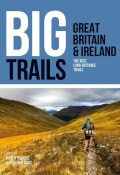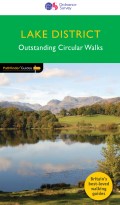Upper Stanton Drew, Pensford, Belluton, Norton Malreward, Norton Hawkfield and Stanton Drew
A walk to the impressive Stanton Drew Stone Circles in a lovely river valley
Google Maps Open Source Maps| Statistics and Files | ||
|---|---|---|
| Start: Upper Stanton Drew | Distance: 5.5 miles (8.8 km) | Climbing: 161 metres |
| Grid Ref: ST 60297 62832 | Time: 2-3 hours | Rating: Easy |
| GPX Route File | Google Earth File | The Chew Valley |
| Statistics | |
|---|---|
| Start: Upper Stanton Drew | Distance: 5.5 miles (8.8 km) |
| Climbing: 161 metres | Grid Ref: ST 60297 62832 |
| Time: 2-3 hours | Rating: Easy |
| GPX Route File | Google Earth File |
Ordnance Survey Explorer Map (1:25,000)
The Walk:
The River Chew runs through a rolling rural landscape a few miles south of Bristol, in the north of Somerset countryside. Several ancient sites lie along its course. This walk visits the best of them, and explores some interesting villages.
It begins at Upper Stanton Drew, on a footpath that runs by a shady Lane. A tiny stone footbridge with pointed arches takes the walk over a brook towards a line of trees that marks the course of the River Chew.
 River Chew near Upper Stanton Drew
River Chew near Upper Stanton Drew Pensford Viaduct
Pensford Viaduct
The River Chew, a gentle reedy stream, leads to what looks like from a distance to be a brick house, but is actually built of bright red sandstone. Here the river divides, sluices diverting some of its water to the mill at Pensford. The mill originally ground corn, but was later adapted for the manufacture of copper and brass.
The path goes slightly uphill, and at the top, a view opens out towards the majestic 16 arch Pensford Viaduct that once carried the Bristol and North Somerset Railway branch from Bristol to Radstock.
To the right is a scrubby hillside, quite unlike the smooth, grassy swells all around. This is an overgrown spoil heap from Pensford Colliery, part of the Somerset Coalfield. Pensford Colliery, which was a working coal mine until 1958, was the first in Britain to have pithead baths.
The route goes under the viaduct into the town of Pensford, where it crosses the river on an old stone bridge. Its modern concrete equivalent carries the A37, which divides the village, over the Chew a little further downstream.
You passed by the now somewhat dilapidated church. Note Bridge House, built on an arch over the river, and Mill Corner, the site of the old town mill. A mark on the corner records the flood level of 1968, when the waters of the Chew rose over head-height in the street.
While the path into Pensford was at low level by the river, the one leaving it climbs a grassy knoll. There are views over the undulating countryside as you pass through the hamlet of Belluton and then climb to the top of Settle Hill, a broad plateau of tall grass and clover, with a magnificent prospect out to the Mendip Hills.
 Norton Malreward Church
Norton Malreward Church The Cove, Stanton Drew
The Cove, Stanton Drew
The descent from Settle Hill takes you to Norton Malreward, which has little church with a square tower, and next to it a magnificent Georgian house, Manor Farm. At the roadway, the loop passes the house of an enthusiastic collector of rolled enamelled signs, which cover every inch of the wall. Peaceful lanes lead down to a pretty little valley with a brook and a hillside of copses, where green woodpeckers can be seen and heard. The small village of Norton Hawkfield is the next settlement visited along the way.
The Round House, an unusual hexagonal toll-house, with its conical thatched roof, stands at a crossroads outside Stanton Drew. An old stone bridge across across the River Chew affords a brief glimpse of some of the village's grander houses, before you turn off towards the Stanton Drew Stone Circles.
There are three rings in all, the largest being a true circle, about 120 yards (108 metres) across. The stones are massive, though many have fallen over. They were assembled over 5,000 years ago in the New Stone Age, and the whole site covered a large area comparable to those at Stonehenge and Avebury.
Many of the stones can be found in the village and the surrounding fields. There is a good view from the walk, but for those who want a closer look, the stones are on private land and a small charge is payable. Nearby, in the village, the Druid's Arms is an ideal spot to have refreshments and take in the character of the village. From the pub, it is a short walk across fields back to the start.
Acknowledgments: Text derived from the Out and Out Series; Discovering the Countryside on Foot. Pictures courtesy of Wikipedia.
Feedback and Suggestions: To suggest a link for inclusion on a this page please complete the Walking Englishman Feedback Form. Thank you.







